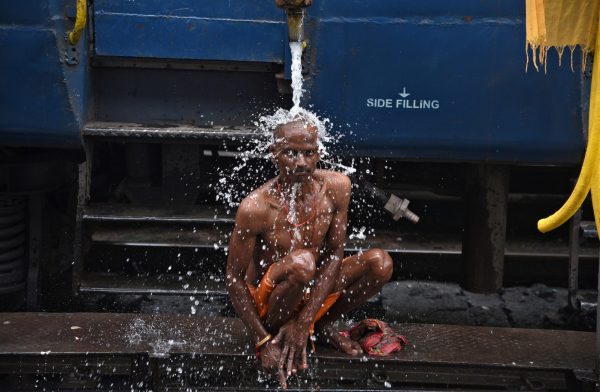But the Northeast’s high transportation costs and isolation has so far negated these advantages, resulting in low growth since the partition in 1947. The geopolitical distancing of the region from its main port of Kolkata, combined with economic insulation, has weighed down the Northeast’s economy.
The Indian government has been trying to bridge this isolation through the ‘Act East’ policy (AEP). India’s proactive role in building a common market with an ambitious yet realistic connectivity program is the key focus of the AEP. Since its inception in 2014, the AEP has been pursued in a multifaceted manner by promoting trade and connectivity.
Assam’s capital Guwahati, the hub of Northeast India, is an example of connectivity-driven integration. The government of Assam has opened a new Act East Policy Affairs Department. International organisations such as the World Bank have been entrusted to create a Vision Report and a new think tank will be supporting the Assam government ‘Act East Department’. Assam’s Chief Minister has been following up on these ‘Act East’ projects personally.
Throughout the Northeast, regional integration is starting to gather pace. Bangladesh has opened a new consulate and a mini office in the Northeast Indian cities of Guwahati and Agartala. And Bhutan and Nepal are planning to follow suit in Guwahati. Air India is planning to operate air services between Guwahati and Dhaka. And Guwahati–Dhaka and Imphal–Mandalay passenger bus services are expected to be operational by 2018.
Infrastructure projects are also underway, with investments from the Japanese government, the World Bank and Asian Development Bank. The East–West Corridor, part of the largest national highway project in India connecting two sides of the country, is almost ready. The Indian part of the Kaladan Multi-Modal Transit Transport (KMMTT) project, which will connect Kolkata port to Sittwe port in the Rakhine state, Myanmar, is in full swing. India has deployed additional resources to complete the Trilateral Highway between India, Myanmar and Thailand.
Most of the capitals of the north-eastern states are being connected by rail to major cities. Agartala and Silchar now have a broad-gauge railway system connecting to Kolkata and Delhi along with other parts of India. Railway construction is also being extended across the border to Bangladeshi ports. These recent developments in the railway system have driven integration and connectivity in the Northeast.
Production networks with Bangladesh and Myanmar provide another potential avenue to bring dynamism to the Northeast. The Northeast and Bangladesh have been developing production networks in cement, processed food and horticulture. However, the Northeast and Myanmar are yet to build the same. The nearby Sagaing State in Myanmar has rich limestone reserves, raising the possibility of cement production networks. Production networks are also possible in handicrafts and food processing, between the Northeast and Myanmar. The Kaladan KMMTT project is aimed at facilitating these networks between the states of Mizoram in India and Chin in Myanmar — specifically for horticulture and forest products.
The government of the Northeast Indian state of Manipur is planning to build a town close to the Moreh border with Myanmar. In this state a food park has also been set up on the outskirts of Imphal and a special economic zone is proposed in Thoubal. Once completed, it could become a major processing centre for fruit, pulses and other agricultural products. Exports from this food park to Myanmar have already begun.
Through the AEP, the Northeast could also become a hub for education the way it has become one for health. Overseas patients from Bhutan, Bangladesh and Myanmar are frequently being treated in Guwahati, and the numbers look set to rise. In Imphal, 90 per cent of patients in Shija Hospital are from Myanmar. An education boom would bring huge returns for the entire Northeast’s economy if the educational sector follows suit. For this to come in to fruition, the imperative is on the government to create more regulatory space and provide a facilitating ethos for the private sector.
The main hurdle to these advances is the fact that India’s Northeast faces a number of logistical handicaps in its development. Infrastructure such as electricity, communication, transportation, banking and finance are sporadic and unevenly distributed among urban and rural areas. Amenities are limited, and the lack of economic opportunities encourages emigration out of the region, particularly of skilled workers. Most government officials in the Northeast are not aware of the advantages of international integration, the Indian government’s AEP initiatives or the benefits of both to the region.
To address bottlenecks at cross-border production links, the Northeast has to invest heavily in physical and institutional infrastructure, which would lead to higher production, both within and across borders, and enhance the growth of the region.
If India implements policies that boost economic integration, confidence should rise and investment in Northeast India will increase. And once investment picks up, Northeast India will be able to recapture its past glory.
Prabir De is a Professor at the Research and Information System for Developing Countries (RIS) and Coordinator at the ASEAN–India Centre (AIC), New Delhi. The views expressed in this article are his own and do not represent the AIC or RIS.


Excellent article Prof.De